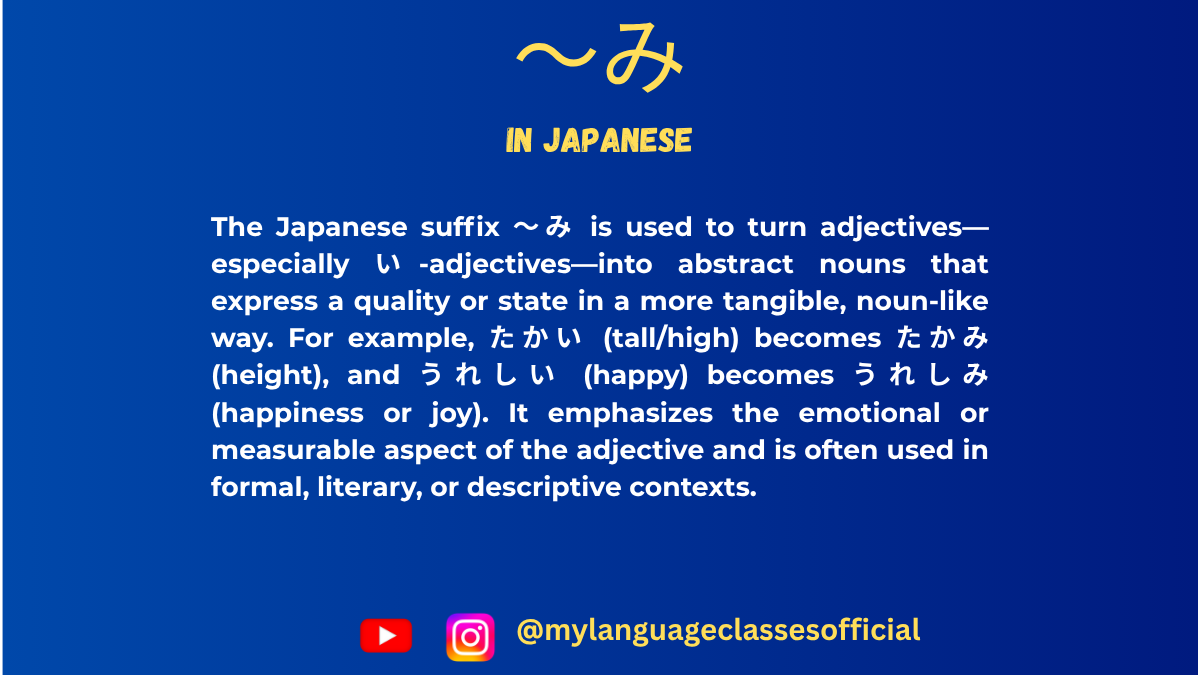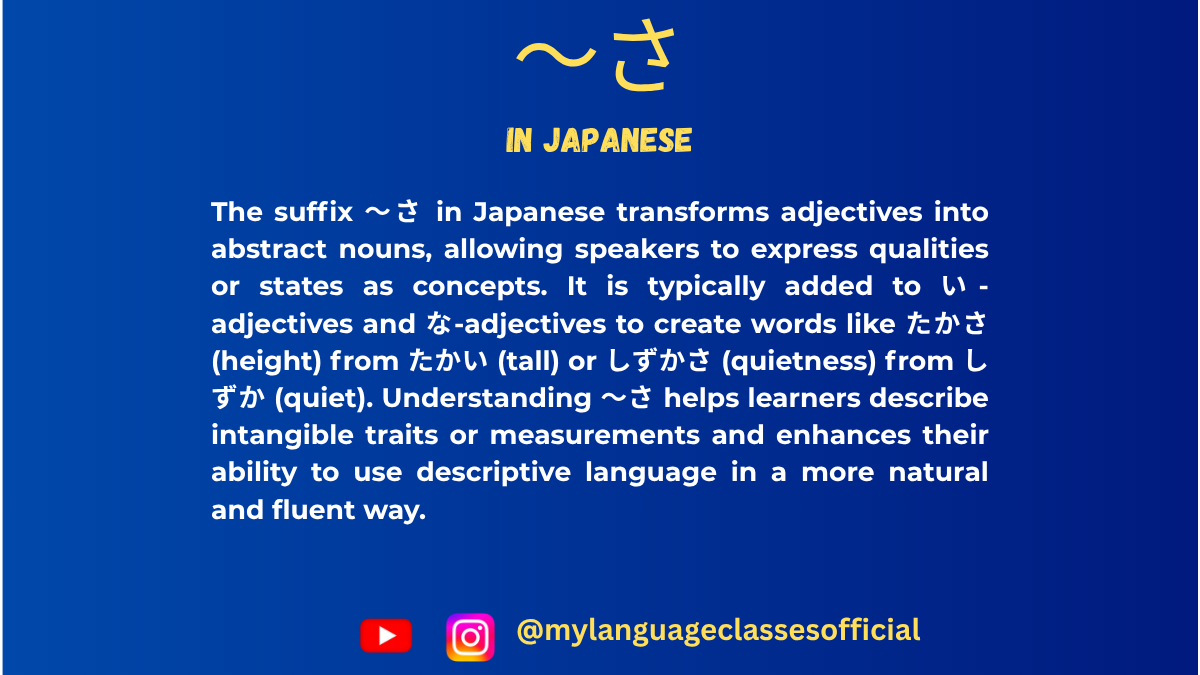Your cart is currently empty!
Tag: difference between sa and mi in japanese grammar

〜み: The Nominalizer for Adjectives/Verbs
Understanding 〜み in Japanese
Japanese is a language rich in nuances, and one of its unique features is the use of nominalizers like 〜み. If you’ve ever wondered how to turn adjectives into nouns to express abstract qualities or feelings, … Read more

Understanding 〜さ: The Nominalizer for Adjectives
Using 〜さ as a Nominalizer
When learning Japanese, one of the most useful grammatical tools you’ll encounter is the nominalizer 〜さ. This simple yet powerful suffix transforms adjectives into nouns, allowing you to express concepts like “height,” “beauty,” or … Read more


